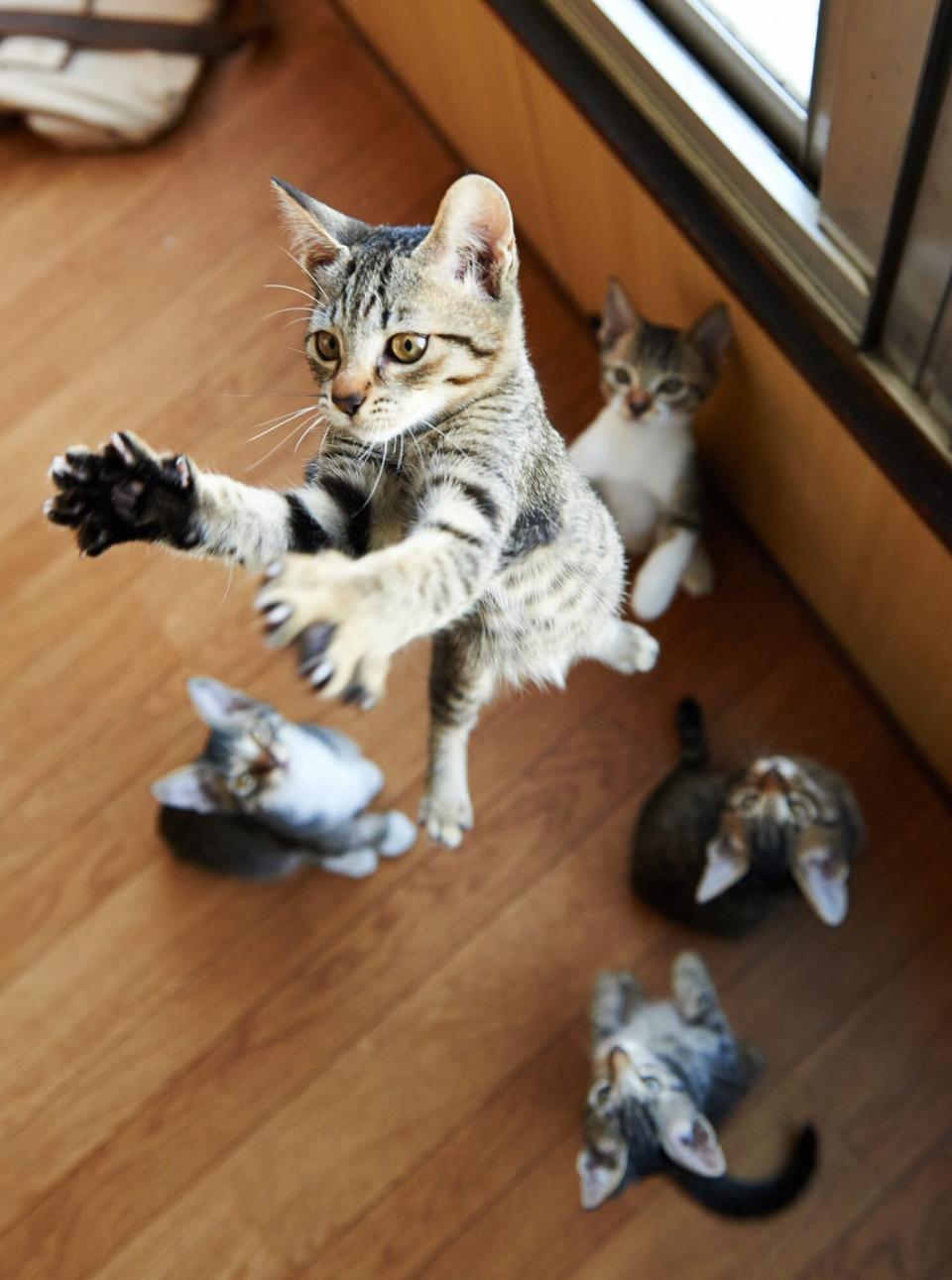How High Can Cats Jump? Honestly, It's Pretty Incredible!

Akimasa Harada / Getty
TABLE OF CONTENTS
On This Page
How Cats Jump So Well
How Far and High Can Cats Jump?
Why Do Cats Jump?
Train Them to Jump Safely
Sure, cats love to laze in the glow of a sunbeam. But in an instant, they can spring into action—and the reach of that spring is staggering. Just how high can cats jump? As much as 8 feet in a single bound! Here's how they do it.
How Cats Jump So Well
Rowyn C. Rose is a science communications specialist at Basepaws, a cat DNA test brand. She says all domesticated cats are descended from the North African/Near Eastern wildcat, which was a tree-dwelling species.
"These wildcats needed to be able to swiftly jump to high perches for safety, observation, and rest. They also needed the ability to jump, twist, and turn—both to pursue prey and to evade predators," she says. "The domestic cats of today have retained many of the same anatomical features of their wildcat ancestors."
Rose says the physiology of today's domestic cat is perfectly tailored to make them accomplished leapers:
Cats' bodies have over 500 muscles, and they use all of them when they leap.
A cat's jumping ability is supported by stronger and longer hind legs and "fast twitch" muscle fibers that support bursts of movement. Additionally, their back legs are angled to help provide better shock absorption when they land.
The cushions of their paws have dozens of nerve receptors. These help assess the best surfaces from which to jump and improve their balance. Cats use their tails for balance, too.
Cats extend their front legs to reach out toward their destination as soon as their back legs propel them forward. "Their front legs allow for more stability, and their claws can also help them grasp landing surfaces, which can provide even more stability," Rose says.
A cat has more than 200 bones, including up to 23 in their tail and 30 in their spine. The flexibility of their spine and its ability to arch allows them to make course corrections while in the air to soften their landings, also known as the "righting reflex".
Whiskers have "proprioceptive follicle cells [that] allow a cat to sense the position, location, and orientation of its body in relation to the ground," Rose says. They also "sense small vibrations and air currents, protect their eyes and faces from objects like tree branches, and judge the distance and size of spaces—all very important to the jumping process."
How Far and High Can Cats Jump?
A healthy adult cat can jump approximately five to six times his body length (about 8 feet!) vertically and nearly as far horizontally. In fact, the Guinness World Book record holder for the longest jump by a cat is Waffle the Warrior Cat, a handsome tuxedo who can leap 7 feet. So if you think that bag of kitty treats is safe on top of your refrigerator, you might walk into your kitchen one day to find your cat helping himself to a buffet.
Granted, this springboard ability might vary for short-legged cats like Munchkins, whose itty-bitty legs might not propel them as far. Rose says the following cat breeds are known for their jumping prowess:
RELATED: What Are Cat Zoomies? Everything You Need to Know About Your Kitty's Frantic Runs Around the House
Why Do Cats Jump?
Most cats are jumping up high to find the best perch and will scale counters, drapes, and even Christmas trees to find it. Rose says this is part of our modern kitties' natural instinct passed down by their wildcat ancestors—and probably for similar reasons. "[Cats jump for] a feeling of safety, the ability to gain a good vantage point, or even just curiosity about the surrounding environment," she adds.
She encourages cat-lovers to provide their pets with safe ways to reach, and comfortably relax in, high places. "Ways to do this could include having a cat tree that they can climb up with different levels of perches, a windowsill seat, or even 'cozy-fying' an already existing shelf space that's stable and out of harm's way."
Making Sure Your Cat Jumps Safely
So should you let your kitty use your home as a jungle gym? Not necessarily. Rose says cats don't know when stoves are on or off, so allowing them to leap up onto counters near these and other heated appliances means there's potential for them to get burned.
For her own cats, she also has to keep both safety and age-appropriate accessibility in mind. "My 14-year-old cat has different needs when it comes to jumping or climbing than my 5-year-old cat does," she says. "I have cat trees in a safe place and a catio that provides stability and access to different levels of height. I also provide supportive props, such as pet stairs, so that my older cat can more easily reach higher areas and come back down in ways that are kinder to his joints."
She adds that cats respond well to positive reinforcement clicker training. So if there are certain areas within the house that are off-limits for leaps and bounds, try teaching your kitty to find more suitable high spots.

